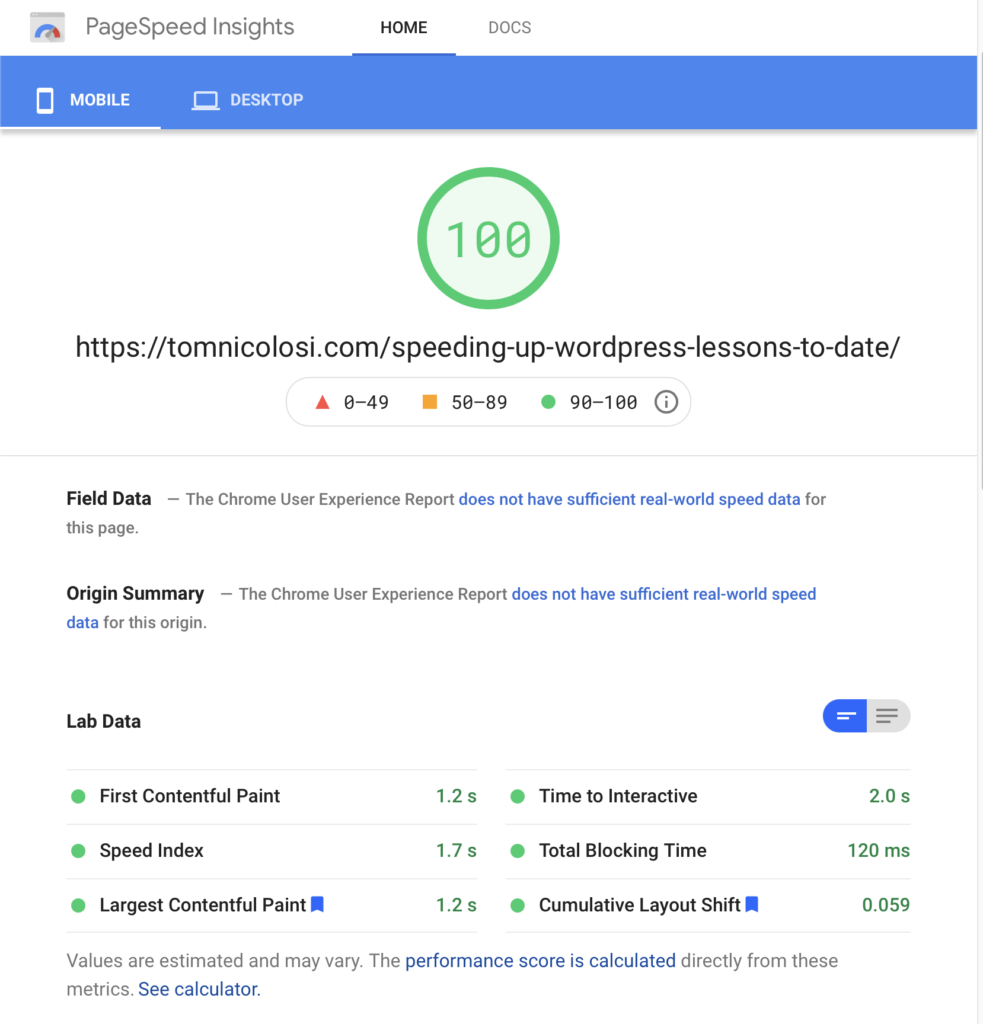I have mentioned in a few posts that I have been studying methods to speed up or perhaps more accurately, improve Lighthouse based page speed scores, for WordPress sites. As a test case I am using this site with it's modest (aka cheap, shitty, shared) hosting.
So far the results have been encouraging enough for me to look askance at the currently hyped trend toward "headless" WordPress at least for most humble sites with similar needs to my own.
So, these simple steps which I will just list for reference and future elaboration:
- Do not use a page builder. The Gutenberg block editor gives you most of what you need for free these days. Free is good and it has the added side benefit of not locking up your content and keeping it exposed for the optimizations I mention below. Find a theme that has good support for the block editor and you will be blessed with better PageSpeed insights scores.
- Optimize your images. A good plugin does this automatically and easily for you.
- Cache your pages. Some hosting plans include this. Mine does not, so again an off the shelf (and free) plugin worked for me.
- Pre-load your cache. If you have a low traffic site visitors will not always benefit from page caching. I use a plugin which caches and pre-loads the cache regularly.
- Take advantage of lazy loading. I use a plugin to lazy load images and embeds like videos and maps. I have found that Google Maps embeds can be particularly good at crushing your page speed scores and need to be treated with care.
Those above are the basics. More advanced moves would be as follows:
- Bundle and minify static resources like JavaScript and CSS.
- Inline CSS if possible to minimize blocking.
- Selectively remove unneeded scripts and plugin resources from pages where they are not needed.
